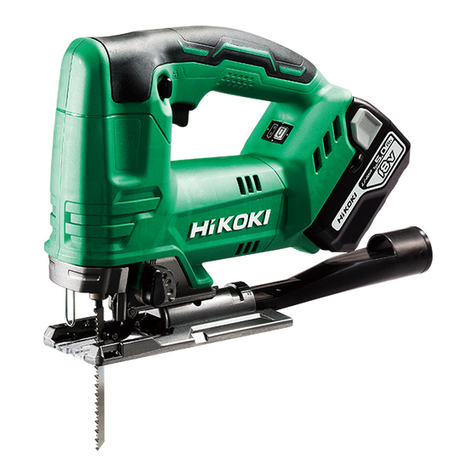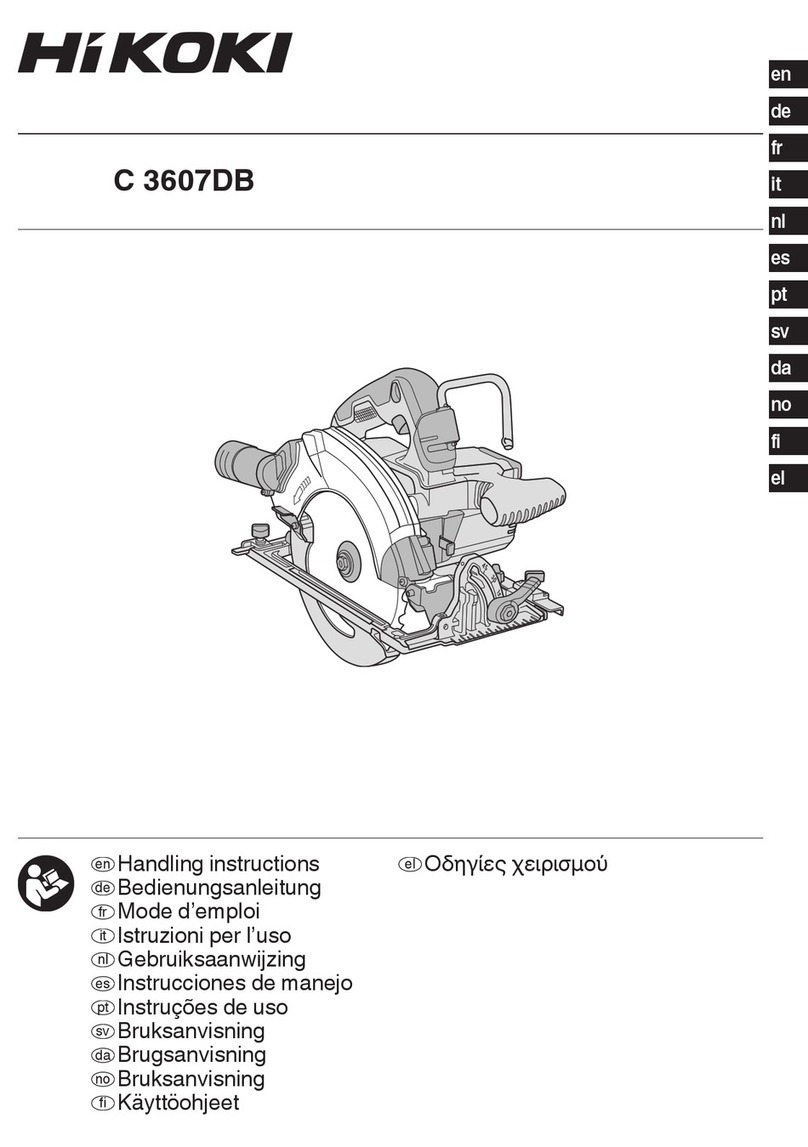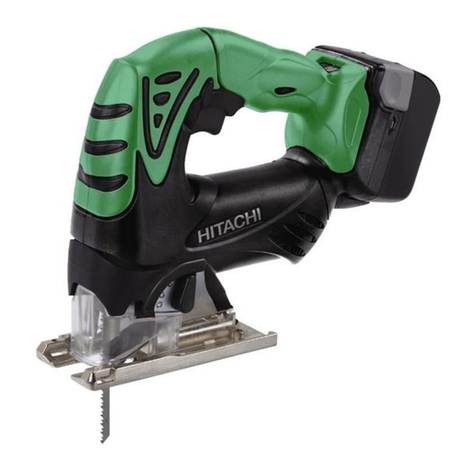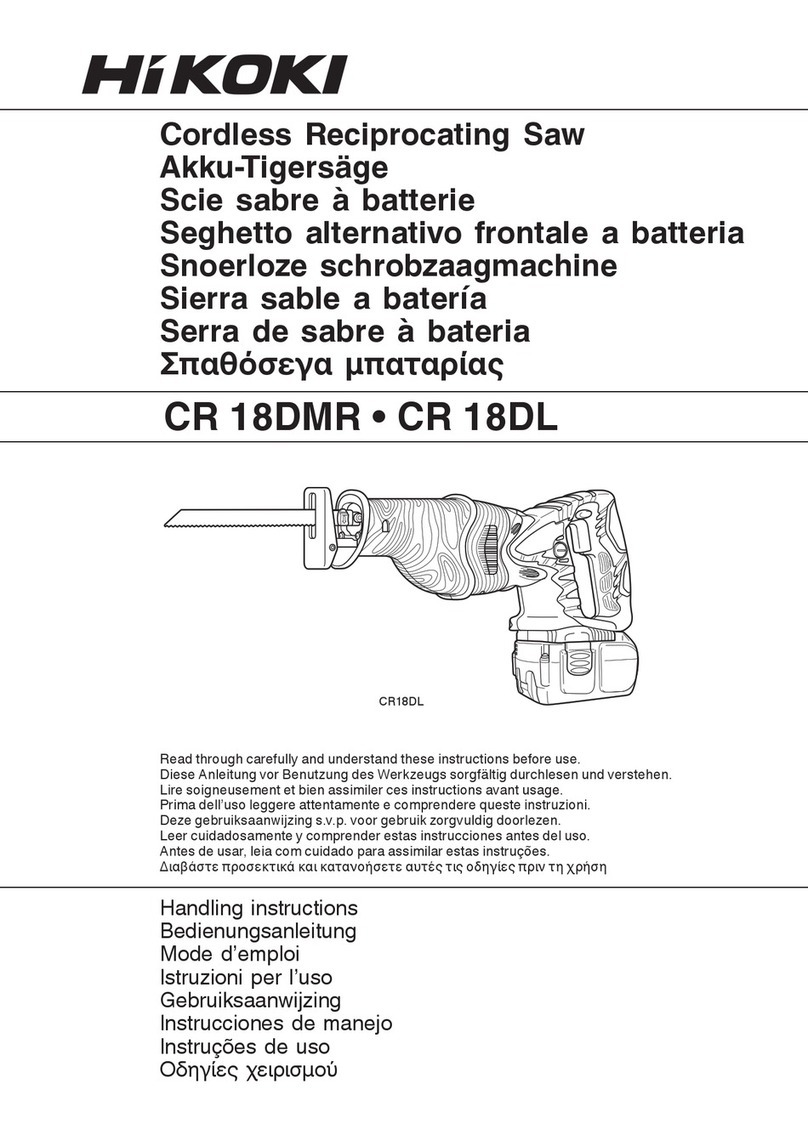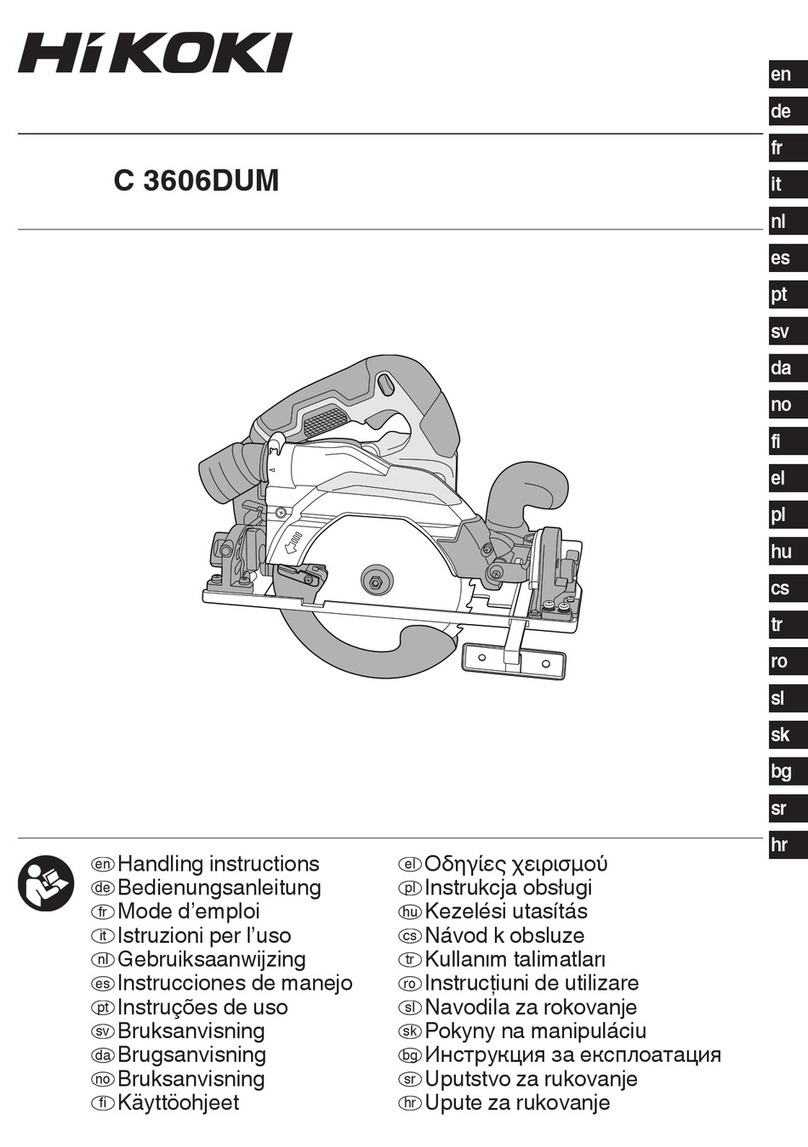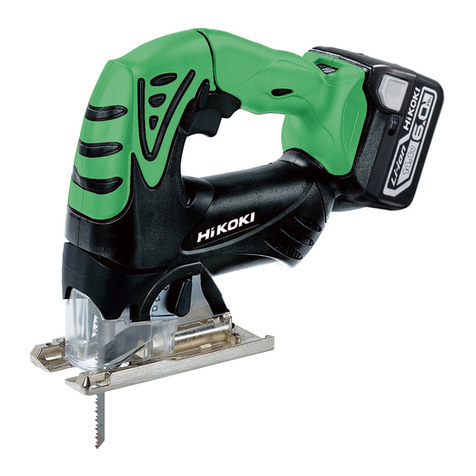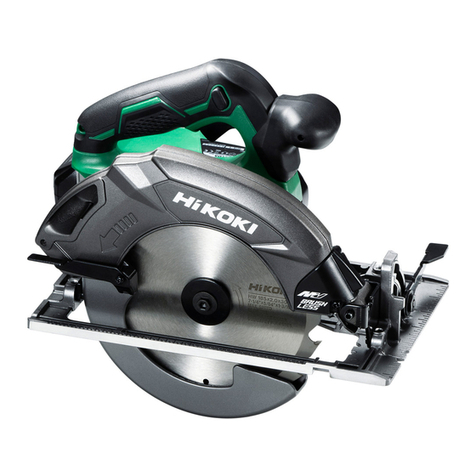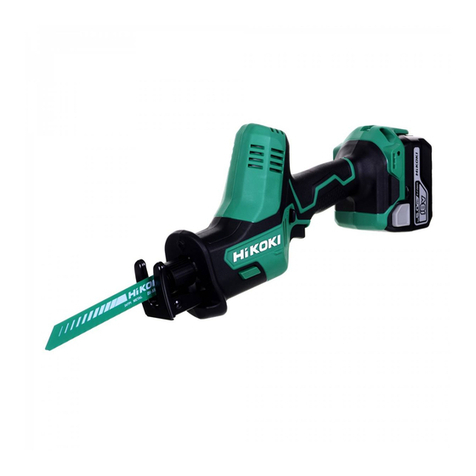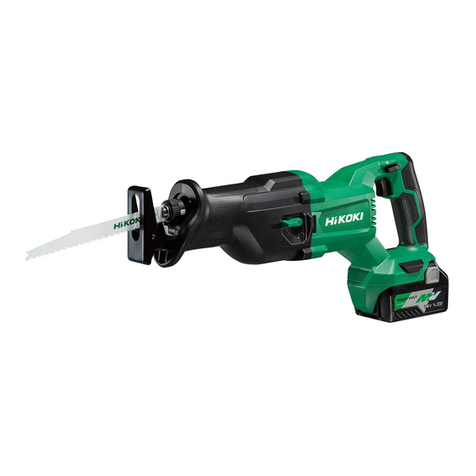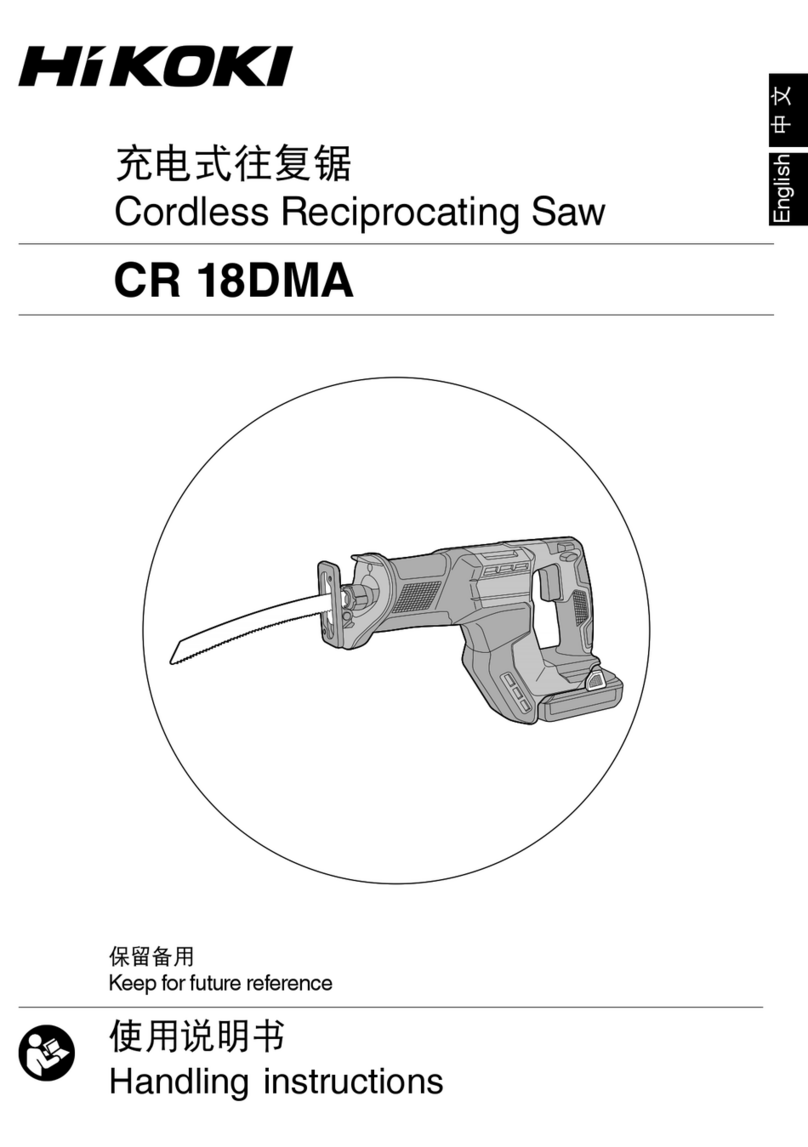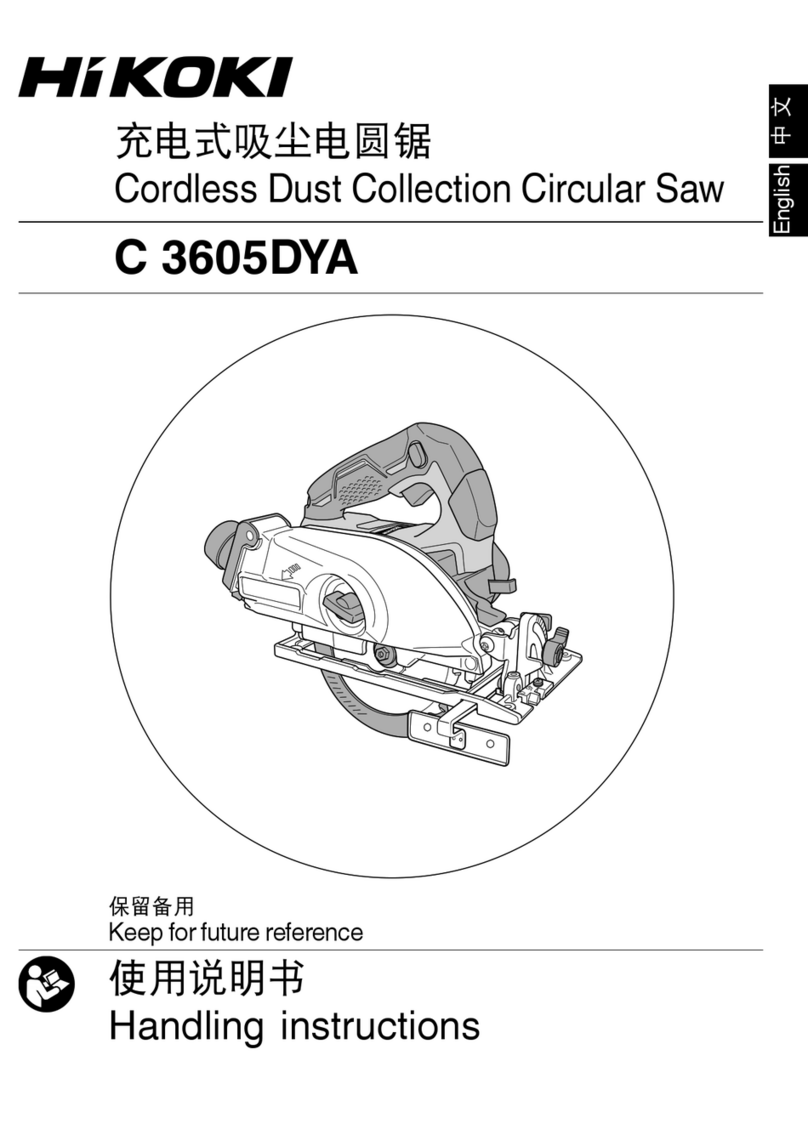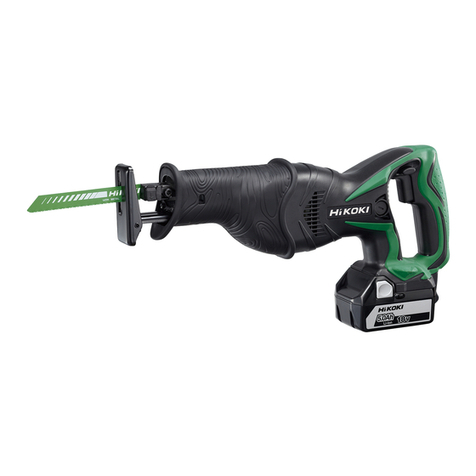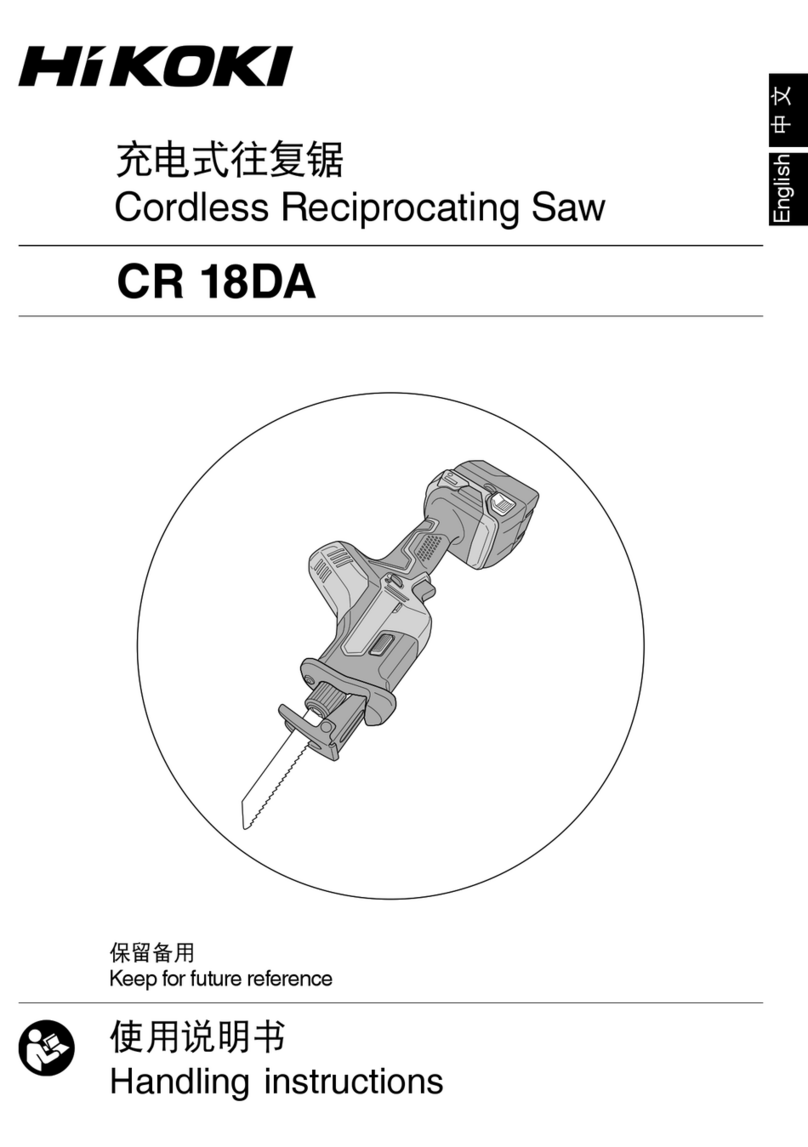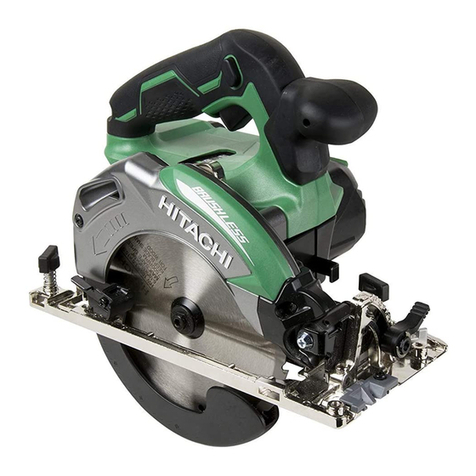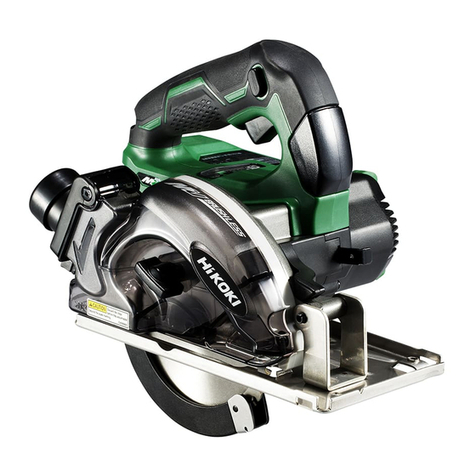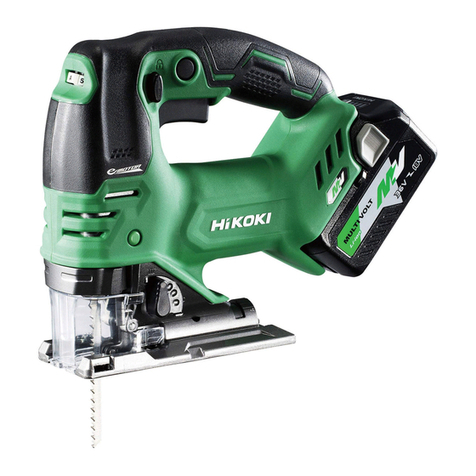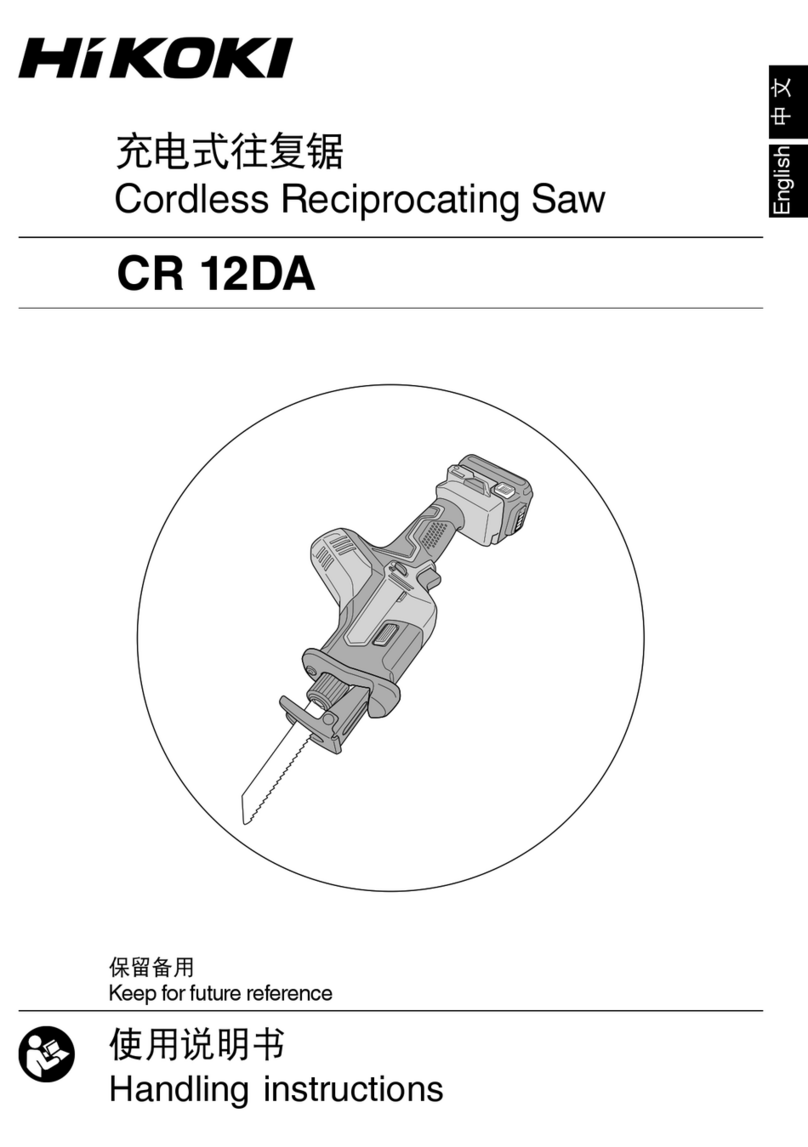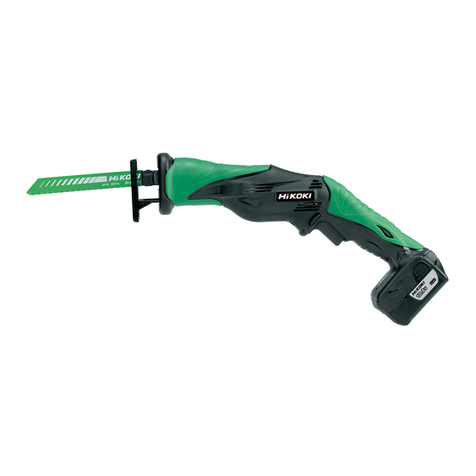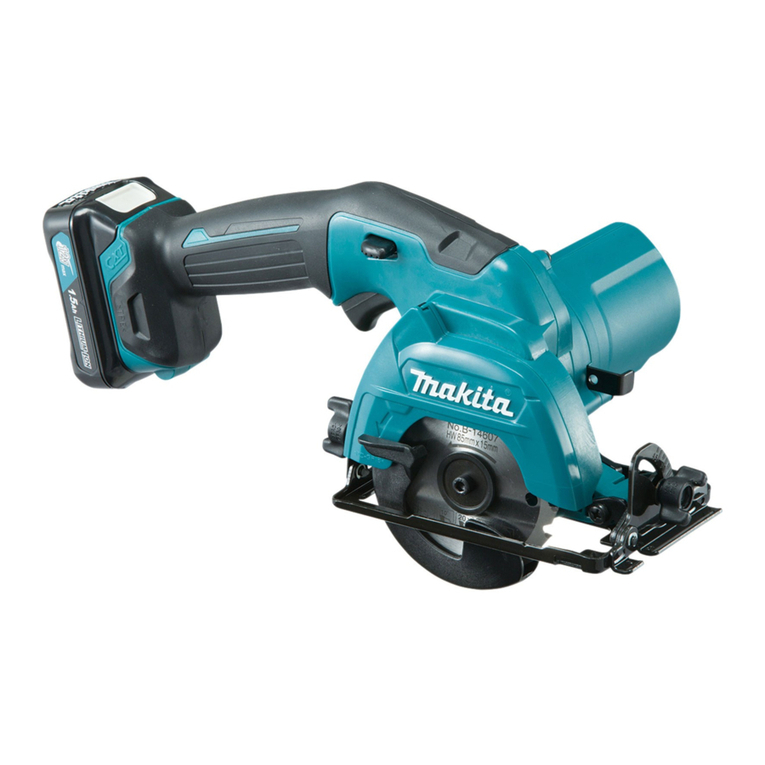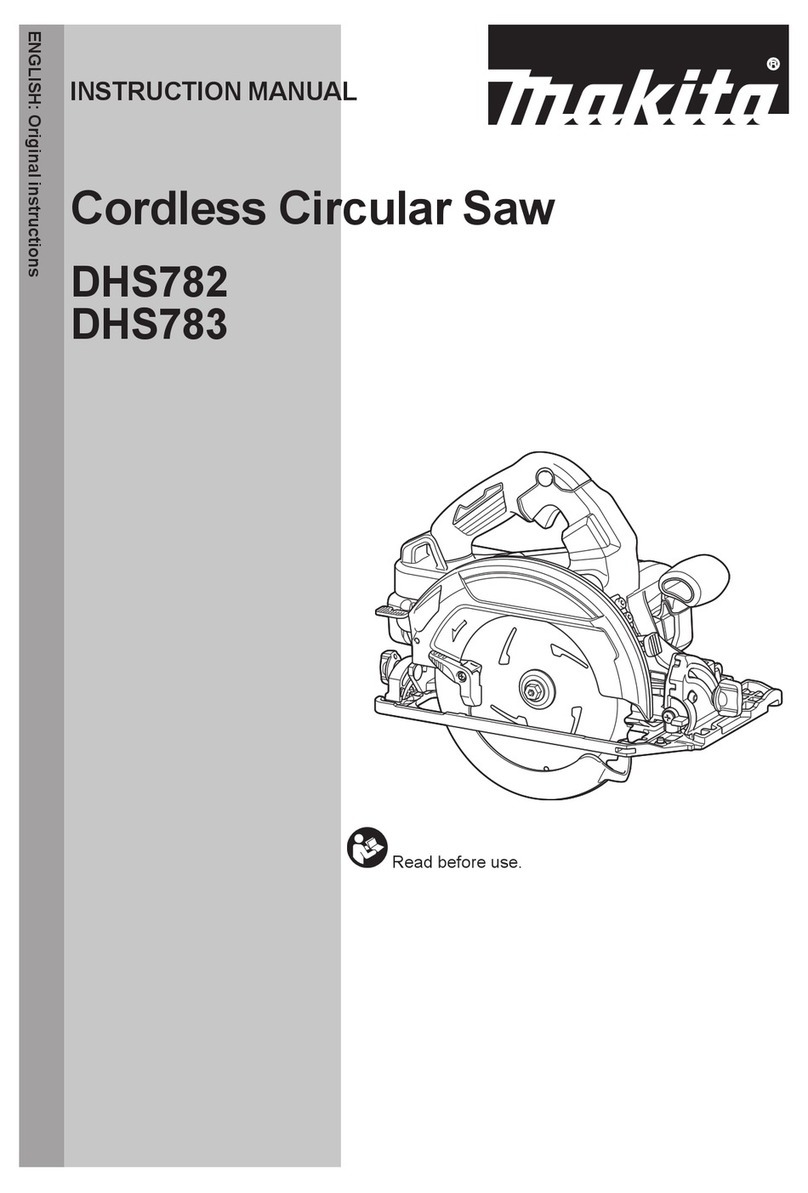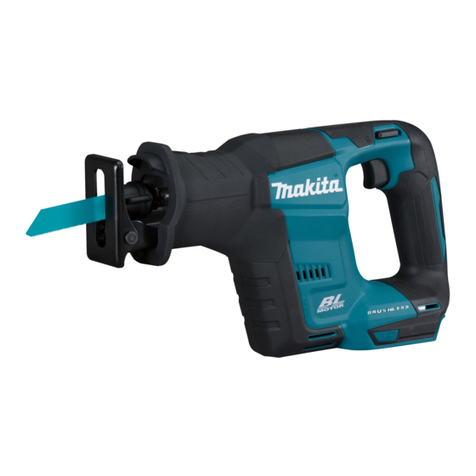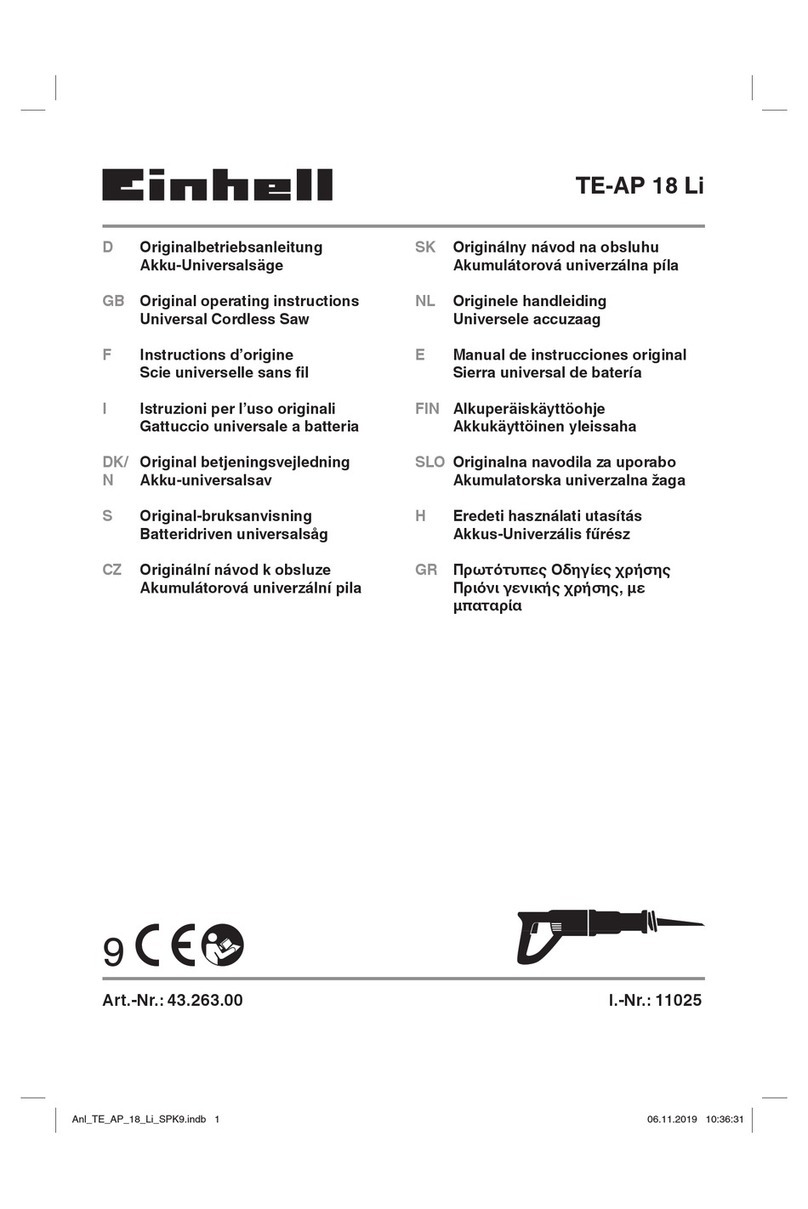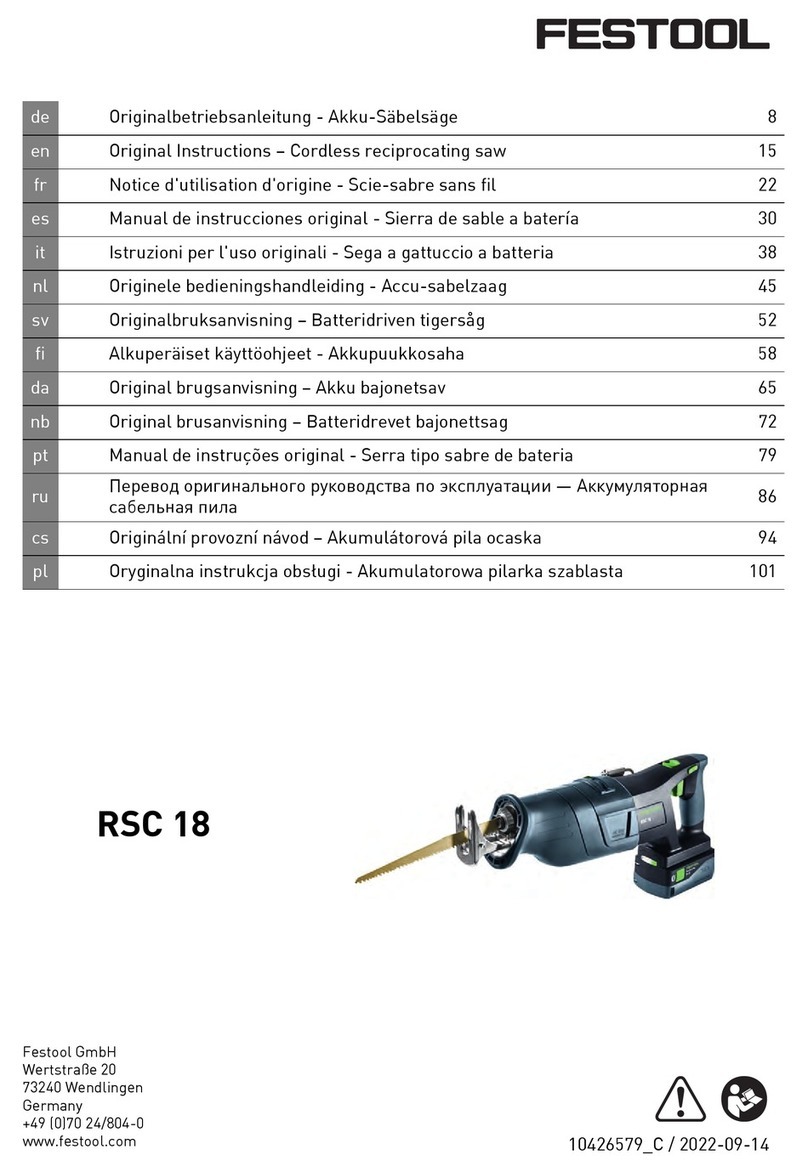
7
b) Use power tools only with specifically
designated battery packs.
Use of any other battery packs may create a risk of
injury and fire.
c) When battery pack is not in use, keep it away
from other metal objects, like paper clips, coins,
keys, nails, screws or other small metal objects,
that can make a connection from one terminal to
another.
Shorting the battery terminals together may cause
burns or a fire.
d) Under abusive conditions, liquid may be ejected
from the battery; avoid contact. If contact
accidentally occurs, flush with water. If liquid
contacts eyes, additionally seek medical help.
Liquid ejected from the battery may cause irritation or
burns.
6) Service
a) Have your power tool serviced by a qualified
repair person using only identical replacement
parts.
This will ensure that the safety of the power tool is
maintained.
PRECAUTION
Keep children and infirm persons away.
When not in use, tools should be stored out of reach of
children and infirm persons.
CORDLESS BRAD NAILER SAFETY
WARNINGS
1. Always assume that the tool contains fasteners.
Careless handling of the nailer can result in unexpected
firing of fasteners and personal injury.
2. Do not point the tool towards yourself or anyone
nearby.
Unexpected triggering will discharge the fastener
causing an injury.
3. Do not actuate the tool unless the tool is placed
firmly against the workpiece.
If the tool is not contact with the workpiece, the fastener
may be deflected away from your target.
4. Disconnect the tool from the power source when
the fastener jams in the tool.
While removing a jammed fastener, the nailer may be
accidentally activated if it is plugged in.
5. Use caution while removing a jammed fastener.
The mechanism may be under compression and the
fastener may be forcefully discharged while attempting
to free a jammed condition.
6. Do not use this nailer for fastening electrical cables.
It is not designed for electric cable installation and may
damage the insulation of electric cables thereby causing
electric shock or fire hazards.
ADDITIONAL SAFETY WARNINGS
1. Safe operation through correct usage.
This tool was designed for driving nails into wood and
similar materials. Use it for its intended purpose only.
2. Be careful of ignition and explosions.
Since sparks may fly during nailing, it is dangerous to use
this tool near lacquer, paint, benzine, thinner, gasoline,
gas, adhesives and similar inflammable substances as
they may ignite or explode. Under no circumstances
should this tool therefore be used in the vicinity of such
inflammable material.
3. Always wear eye protection (protective goggles).
When operating the power tool, always
wear eye protection, and ensure that
surrounding people wear eye protection
too.
The possibility of fragments of the nails
that were not properly hit entering the
eye is a threat to sight. Eye protection can be bought at
any hardware store. Always wear eye protection while
operating this tool. Use either eye protection or a wide
vision mask over prescription glasses.
Employers should always enforce the use of eye
protection equipment.
4. Protect your ears and head.
When engaged in nailing work please wear ear mufflers
and head protection. Also, depending on condition,
ensure that surrounding people also wear ear mufflers
and head protection.
5. Pay attention to those working close to you.
It would be very dangerous if nails that were not properly
driven in should hit other people. Therefore, always pay
attention to the safety of the people around you when
using this tool. Always make sure that nobody’s body,
hands or feet are close to the nail outlet.
6. Never point the nail outlet towards people.
Always assume the tool contains
fasteners.
If the nail outlet is pointed towards
people, serious accidents may be
caused if you mistakenly discharge the
tool. When connecting and disconnecting the battery,
during nail loading or similar operations, be sure the nail
outlet is not pointed towards anyone (including yourself).
Even when no nails are loaded at all, it is dangerous to
discharge the tool while pointing it at someone, so never
attempt to do so. No horseplay. Respect the tool as a
working implement.
7. Check push lever before use.
Make sure the push lever operates properly. (The push
lever may be called “Safety”.) Never use the Nailer
unless the push lever is operating properly, otherwise
the Nailer could drive a fastener unexpectedly. Do not
tamper with or remove the push lever, otherwise the
push lever becomes inoperable.
8. Choice of triggering method is important.
Read and understand section titled “HOW TO USE THE
NAILER” on page 15.
9. Prior to using this product, make sure that it is
operating properly in accordance with the content
of “Testing the nailer” on page 14.
10. Use specified nails only.
Never use nails other than those specified and described
in these instructions.
11. Be careful when connecting the battery.
When connecting the battery and loading nails in
order not to fire the tool by mistake, make sure of the
followings.
○Do not touch the trigger.
○Do not allow the firing head to contact with any
surface.
○Keep the firing head down.
Strictly observe the above instructions, and always
make sure that no part of the body, hands or legs is
ever in front of the nail outlet.
12. Do not carelessly place your finger on the trigger.
Do not place your finger on the trigger except when actually
nailing. If you carry this tool or hand it to someone while
having your finger on the trigger, you may inadvertently
discharge a nail and thus cause an accident.
0000BookNT1850DF.indb70000BookNT1850DF.indb7 2022/09/0710:41:512022/09/0710:41:51
